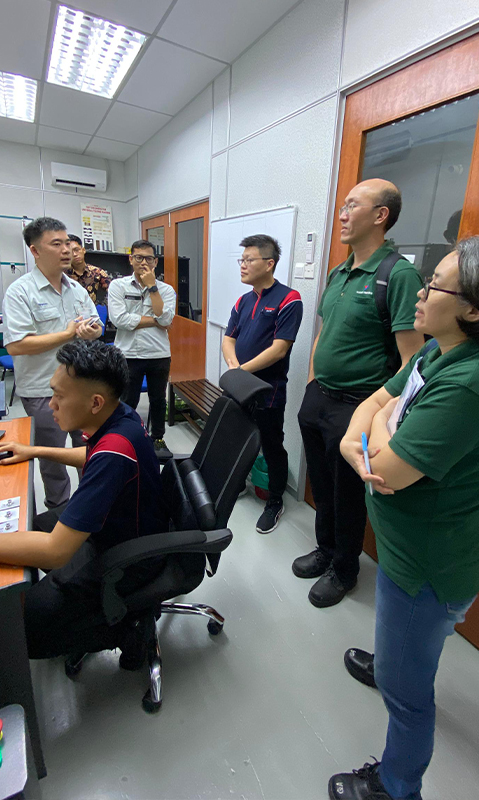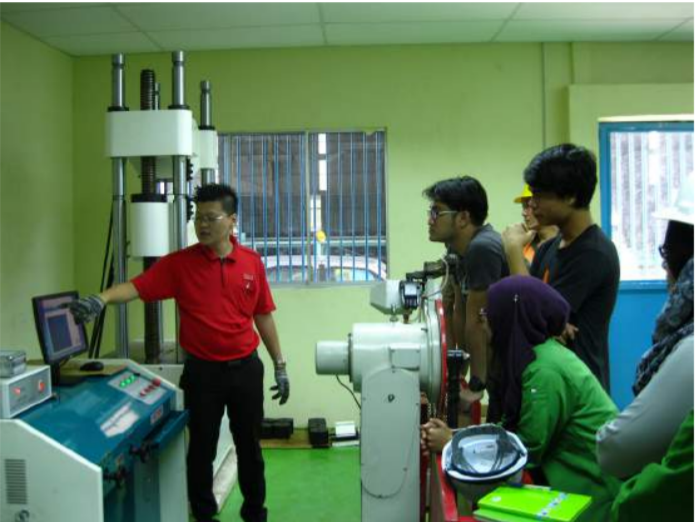Introduction
Whether it’s testing tensile strength, compressive load, or impact resistance, the accuracy of results depends on more than just the machine — it depends on the technician using it. Proper material testing training is essential for lab personnel to produce reliable, repeatable, and compliant results.
In Malaysia’s growing manufacturing, construction, and R&D sectors, the demand for certified, well-trained lab technicians has never been higher. This blog explores how material testing training helps build a competent workforce and how Victor Materials supports this crucial aspect of industry growth.
Why Material Testing Training Is Important

Poorly trained technicians can cause:
- Inaccurate results
- Equipment damage
- Safety hazards
- Regulatory non-compliance
Proper material testing training ensures that technicians:
- Operate testing machines correctly
- Understand standards such as ISO, ASTM, and SIRIM
- Interpret results with confidence
- Maintain equipment regularly
- Record and report data accurately
For Malaysian companies seeking ISO 9001 or ISO/IEC 17025 certification, having qualified personnel is a requirement. That’s why comprehensive material testing training should be a top priority.
Core Components of Material Testing Training
1. Understanding Testing Principles
Effective material testing training begins with theory:
- Types of mechanical testing (tensile, compression, flexural, impact)
- Purpose and expected outcomes
- Importance of sample preparation
- Effects of environmental conditions on testing
2. Hands-On Equipment Training
Technicians need direct experience operating:
- Universal Testing Machines (UTMs)
- Compression testers
- Impact testers
- Hardness testers
Victor’s line of equipment, including the 260E and 8000D series, is used in many Malaysian labs for material testing training due to their ease of use and reliable software integration.
3. Safety Protocols
Material testing training must also include:
- Safe sample loading procedures
- Proper machine maintenance
- Emergency stop use
- Lab safety and PPE requirements
4. Standardized Test Methods
Technicians must understand and follow procedures defined by:
- ISO standards (e.g., ISO 6892, ISO 527)
- ASTM standards (e.g., D638, D695)
- EN and SIRIM equivalents
This ensures that test results meet both Malaysian and international compliance requirements — a major focus of material testing training.
5. Data Recording and Interpretation
Technicians trained in:
- Using software to plot stress-strain curves
- Interpreting modulus of elasticity, yield strength, etc.
- Recording and reporting results in standard formats
Such analytical skills are a core goal of material testing training.
Where to Get Material Testing Training in Malaysia

Victor Materials offers on-site and online material testing training for all its equipment.
Technical universities and polytechnics (like UniKL, UTM, and Politeknik Malaysia) integrate material testing training in engineering curriculums.
SIRIM QAS International and accredited training centers provide workshops focused on compliance-based material testing training.
Use Case: Training for Glove Manufacturing QA Labs

A glove manufacturer in Klang Valley equipped its lab with a Victor 2308E UTM. Initially, technicians struggled with consistent test results. After receiving a 3-day material testing training workshop, the team:
- Reduced result variability by 45%
- Improved reporting accuracy
- Passed third-party ISO 11193 audits on the first try
This demonstrates the ROI of structured material testing training
.
Supporting Academic Institutions
Victor Materials collaborates with Malaysian universities and colleges by offering educational packages for material testing training, including:
- Student-friendly testing machines
- Training manuals and SOPs
- Software licenses for data analysis
- Instructor-led webinars and seminars
This hands-on exposure helps future engineers and QA professionals gain real-world testing experience through their material testing training.
Tips for Setting Up Internal Material Testing Training
To implement an in-house material testing training program, consider:
- Assigning a lead technician to oversee sessions
- Creating SOP documents aligned with ISO/ASTM standards
- Scheduling quarterly refresher courses
- Keeping a training log and certification record for audits
Consistent material testing training keeps skills sharp and standards high.
Conclusion
In Malaysian industries where quality is paramount, material testing training isn’t just beneficial — it’s essential. Well-trained technicians ensure testing is accurate, standards are met, and products are safe.
Victor Materials is proud to support labs, factories, and institutions across Malaysia with industry-leading equipment and dedicated material testing training resources. With proper training, your team can avoid errors, reduce downtime, and meet international compliance confidently.

